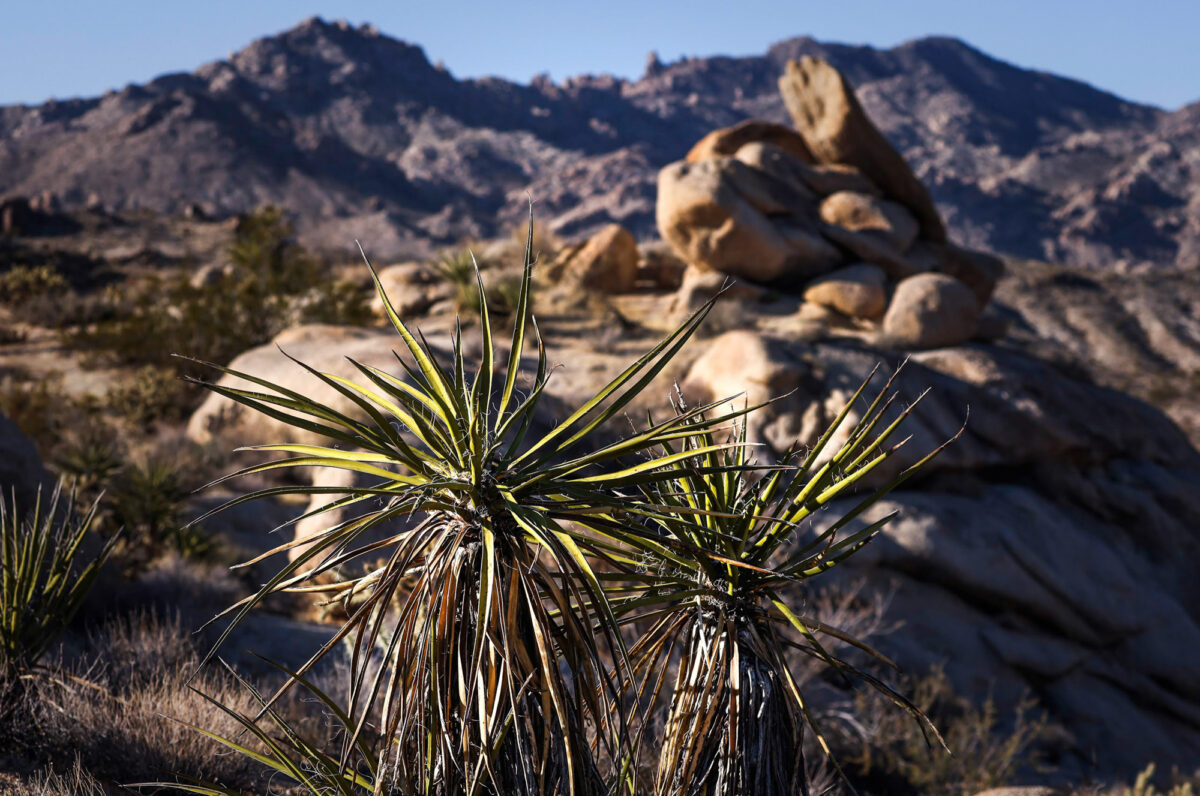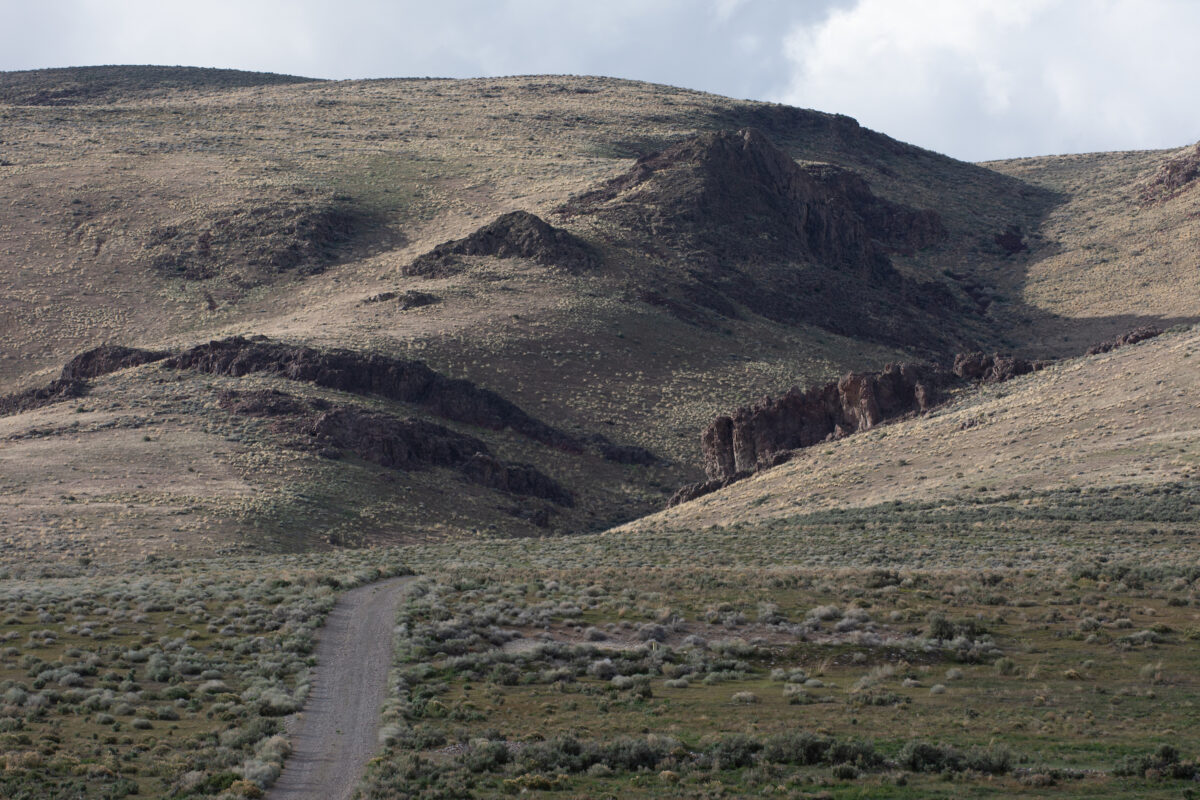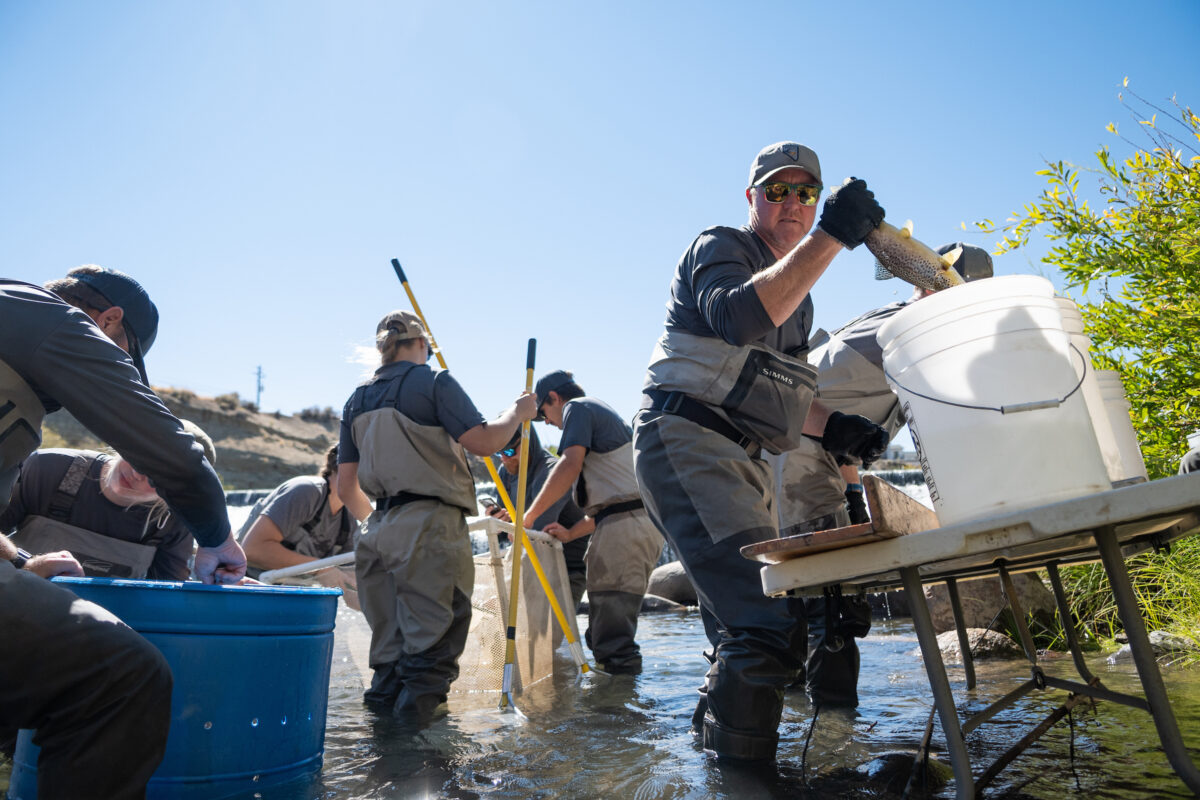Indy Environment: Conservationists paint bleak picture of Nevada’s environment under Trump

Good morning, and welcome to the Indy Environment newsletter. I'm Amy Alonzo, the environment reporter for The Indy.
As always, I want to hear from readers. Email tips to me at [email protected]. To get this newsletter in your inbox, subscribe here.

“The best predictor of future behavior is past behavior.”
It’s an old adage, but one that rings true time and again. And, it’s the reason those with a conservation bent are concerned about what four years under a second Trump administration could mean for everything from environmental regulation to funding of federal land management agencies to the future of the nation’s growing clean energy movement.
In the run-up to the election, President-elect Donald Trump and Vice President Kamala Harris espoused plans for a host of issues — immigration, the economy, reproductive rights — but the climate and environment remained largely overlooked.
Sure, the issues popped up occasionally. Trump vowed to up fossil fuel production with his call to “drill, baby, drill” and, during a campaign visit in Nevada, said there’s no need to worry about the environment because it will “be just fine,” while Harris seemed to ride the tide of the current administration’s $2 trillion dedicated to climate policies (she cast the tie-breaking vote for the Inflation Reduction Act) while generally failing to outline a plan of her own.
“It’s not talked about because voters don’t care about it, and voters don’t care about it because it’s not talked about,” Leah Rubin Shen, western managing director for the national clean energy trade organization Advanced Energy United, said of environmental issues. “It’s not a big driver for the way people vote.”
But the climate and environment weren’t overlooked by the Heritage Foundation, a conservative think tank banking on Trump enacting, at least in part, policies outlined in its Project 2025 — a roadmap to guide a future conservative administration. The roadmap plots strategies for issues ranging from border security to restoring energy production on American soil — all with a conservative slant.
While Trump tried to distance himself from Project 2025 during the election, the majority of those who worked on the project are connected to Trump or his first administration.
It’s hard to guess what a Harris administration would have looked like in Nevada — perhaps a continuation of environmental policies rolled out during the past four years — but we can reflect on Trump’s first four years in office and see them as a harbinger of what’s (likely) to come.
Regulations, permitting and oversight
Depending on how you feel about the massive solar sprawl in the West, a change in administration could be a good thing — Trump has bemoaned the amount of land utility-scale solar fields require, unlike the current administration, which has permitted large-scale solar projects across vast swaths of the West, including Nevada, despite the cries of protest from conservationists concerned about their placement.
But what’s concerning to conservationists are deeper cuts to environmental oversight, rolled back regulations and expedited permitting as Trump zealously builds off the track record of his first term.
Less rigorous environmental review
During the last week of his first term, the Trump administration approved Thacker Pass, the controversial lithium mine being built north of Winnemucca, a project conservationists argued was fast tracked and not given proper environmental review.
Those claims came on the heels of Trump loosening mining regulations during his last days in office by adding mining to a list of industries that can have their permitting fast-tracked under a law signed by former Democratic President Barack Obama a decade ago to streamline development of utility projects.
Multiple projects across Nevada, such as the 600 megawatt Stagecoach Wind Project being built just east of Eureka — the second and to-be-largest wind facility in the state — and Silver Star 1, a 650 megawatt solar facility planned for the Amargosa Valley, have received expedited permitting under the FAST-41 law.
Cuts to national monuments
Project 2025 advocates for federal review of national monuments and repealing the Antiquities Act of 1906, which grants the sitting president power to protect cultural and natural resources on federal land.
Several of Nevada’s national monuments, including Avi Kwa Ame, the state’s most recent addition, and Gold Butte, site of the 2013 Bundy standoff between the private rancher and the federal government (a monument Trump proposed reducing the boundary of during his first term) — were designated under the Antiquities Act.
Scaling back conservation in federal resource management plans
Project 2025 calls for the review of recently drafted resource management plans (the guiding documents directing actions such as where mining and drilling can occur on federal land) and to eliminate management decisions that advance President Joe Biden’s efforts to conserve 30 percent of the nation’s lands and waters by 2030.
In Nevada, federal resource management plans are sorely outdated, with plans dating back a decade to nearly 40 years.
Increased energy costs
During his victory speech, Trump boasted that America has “more liquid gold (oil and gas) than any country in the world,” including Saudi Arabia and Russia, a nod to his interest in fossil fuels rather than clean energy — something that doesn’t bode well for Nevada, a state lagging in its push to reduce carbon emissions and that relies on clean energy jobs to help drive its economy.
Within hours of Trump’s victory, groups such as Center for Western Priorities and Advanced Energy United were painting stark pictures of the next four years, particularly under Project 2025.
The project’s policies “go against nearly everything voters in the American West care about,” according to the center.
And a new report by Energy Innovation, a nonpartisan energy and climate policy firm, finds that a transition to strategies outlined in Project 2025 would increase annual home energy costs by about $460 during the next decade for the average Nevadan while substantially decreasing investment in clean energy technology jobs in the state — a concern echoed by the Nevada Conservation League.
Roughly 43,000 Nevadans are employed in the clean energy industry, according to Advanced Energy United — more than the 34,000 people employed at hospitals or the 20,000 employed in real estate.

In the weeds
Forest Service woes: Federal seasonal employees across Nevada will find themselves looking for alternative employment next year following an announcement by the U.S. Forest Service that it won’t be hiring seasonal employees (excluding fire) in the coming year because of budget shortfalls.
The agency relies on seasonal employees for jobs ranging from maintaining trails to operating campgrounds.
In the Forest Service’s Lake Tahoe Basin Management Unit, between 35 and 40 employees will be affected; a spokesperson for the Humboldt-Toiyabe National Forest did not reply to requests for staffing affected by the freeze.
About 78 percent of the Lake Tahoe Basin on both sides of the lake and 10 percent of Nevada’s land is managed by the U.S. Forest Service.
Mind boggling lithium financials: In the largest ever publicly announced investment by an American original equipment manufacturer in a lithium carbonate project, General Motors, one of the world’s largest automakers, in October entered into a $625 million agreement with Thacker Pass, the state’s second permitted lithium mine.
GM will acquire 38 percent ownership in Thacker Pass in exchange for the funding, which will help bankroll the first phase of construction for the project.
And Lyten, a California-based supermaterial company, announced a more than $1 billion investment in Northern Nevada to build the world’s first lithium-sulfur battery gigafactory in Reno.
The batteries are as much as 40 percent lighter than traditional lithium-ion batteries and use materials abundant in the United States. Chrysler, another major automaker, will be using Lyten’s batteries in its futuristic Halcyon electric vehicle.

ICYMI:
Feds give lithium the thumbs up: Federal officials permitted Nevada’s third lithium mine in October by giving the go-ahead to Rhyolite Ridge in southwestern Nevada. The mine is expected to produce enough lithium to power 370,000 electric vehicles each year.
… Conservationists respond by suing: Because it’s not over till it’s over, conservation and tribal groups have jointly filed a lawsuit in a last ditch effort to protect the rare Tiehm’s buckwheat, a tiny plant threatened by the construction of Rhyolite Ridge.
LL Cool J, meet Lahontan cutthroat trout — LL probably wasn’t referencing Lake Tahoe’s Lahontan cutthroat trout population in 1990 when he rapped “Don’t call it a comeback, I been here for years” — or maybe he was.
The fish, native to Lake Tahoe but extirpated in the 1930s, are making a comeback thanks to efforts from state wildlife managers that helped a handful of fish spawn unassisted in the lake’s tributaries — something that hasn’t happened in nearly 100 years.
Anything goes: The 2024 water year was abnormally normal, and officials forecast the coming water year as having equal chances of above, below or (you guessed it) normal amounts of precipitation.
Just whose land is it?: Elko County commissioners are backing Utah’s bid to acquire millions of acres of federally held land.
Parks and trails are winners: Nevada will receive $375 million in federal funding through the Southern Nevada Public Land Management Act to fund recreation, conservation and wildfire prevention.

Here’s what else I’m reading (and listening to) this week:
- Although science has since shown that suppression fuels larger wildfires and that prescribed burning is critical to reduce wildfire risk, the U.S. Forest Service has ordered a halt to prescribed burning in California for the foreseeable future. KQED explains why.
- A University of Arizona researcher who discovered similarities between the Lower Colorado River Basin and the surface of Mars theorizes that Mars possibly once shared a climate similar to that of the southwestern United States, according to Newsweek. Could it offer insight into where life could have existed?
A closer look
Ski season is starting early for Nevadans. Lee Canyon in the south and Mt. Rose-Ski Tahoe in the north are open for the season with man-made snow, and Tahoe-area resorts are rolling out opening dates during the next several weeks. Bring on the snow!
Editor's note: This story was updated on 11/15/24 at 9:30 a.m. to correct the tribal groups involved in a lawsuit to protect the Tiehm's buckwheat.
